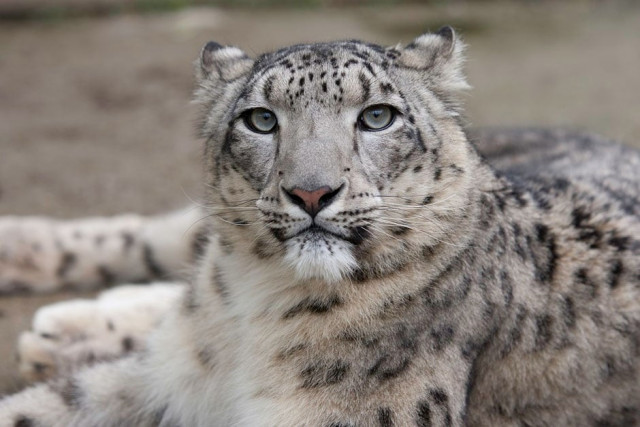Infrastructure development posing serious threat to snow leopards in G-B: study
WWF-Pakistan study finds increased human footprint, through linear development, deteriorates big cat habitat

Infrastructure development, particularly road construction, is threatening the habitat of the elusive snow leopard in the Gilgit-Baltistan (G-B) region, a recent study by the World Wildlife Federation (WWF)-Pakistan has shown.
“Rapid infrastructure development, primarily roads, potentially degrades the snow leopard (Panthera uncia) habitat resulting in disrupting the big cats' movement and increasing human-wildlife conflict in the Gilgit-Baltistan region. The prey species of the Snow leopard such as Himalayan ibex and domestic livestock are also killed due to heavy traffic on the highways,” the study stated.
The WWF-Pakistan’s baseline research study has been undertaken through the project titled Building Ecological and Sustainable Transport/Linear Infrastructure for Snow Leopards in the Hindu Kush Karakoram Himalaya Landscape in Pakistan (BEAST). The project was supported by the With Snow Leopards Small Grant (SLSG), initiated by Tencent Foundation and Shan Shui Conservation Center with support from Huatai Foundation, Amity Foundation, and Pecking University Center for Nature and Society.
The study recommended that there was a need to strike a balance between boosting infrastructure development and with conservation of threatened wildlife such as snow leopards in the region. The report stated that the G-B region was home to diverse wildlife including the vulnerable snow leopards. It pointed out that the linear infrastructure development that cuts through the landscape has fragmented the leopard’s habitat. The report found that although linear infrastructure improved national and regional economies, it restricted wildlife movement and posed a threat to the snow leopards and their prey species, such as ungulates.
Focusing on the broader road ecology theme, the study gathered evidence on infrastructure-related threats to the species and their habitat in the G-B region. It collected data on wildlife-vehicle collisions, investigated the impact of increasing infrastructure on human-wildlife interaction, and analyzed land use changes in known snow leopard hotspots over the past 20 years.
Read WWF raises alarm over elephant's welfare
The report covered two major roads namely Karakoram Highway (KKH) and Gilgit-Shandur Road which bisect the snow leopard habitat. In the backdrop of the surging infrastructure growth in the G-B region, WWF-Pakistan launched the Sustainable Infrastructure Initiative in 2019 which aimed to build the capacities of relevant stakeholders, raise awareness, and advocate for sustainable and green infrastructure planning and development in the Hindukush-Karakoram-Himalaya (HKH) region.
Commenting on the study, WWF-Pakistan Director General Hammad Naqi Khan said that infrastructure development projects help boost trade and tourism, but they should not overlook the environmental and species conservation aspects. He was of the view that detrimental impacts of the projects could be avoided through meticulous planning, sustainable infrastructure, and an integrated approach which promotes biodiversity conservation and protection of the natural ecosystem. “It is crucial to build upon this study and undertake further investigations on wildlife movement and migration patterns to assess the impact of infrastructure development on wildlife populations in critical habitats,” Khan added.
The report indicated that large-scale transport-infrastructure development and burgeoning hospitality projects have posed a threat to the local biodiversity and pristine landscape in G-B. The report proposed that following the current laws regulating wildlife, linear development, and human encroachment should be prohibited in the protected areas.
It also recommended that the construction of wildlife corridors and crossings in potential wildlife habitats could help minimize the access of wildlife to high-traffic roads and could reduce wildlife-vehicle collisions. The study also suggested that the deployment of devoted law enforcement and traffic personnel along wildlife hotspots can help thwart the hunting and poaching of snow leopards and their prey species. Furthermore, it suggested that infrastructure-related development projects should take proactive mitigation steps to safeguard the native ecology and wild species.
Various studies indicate that the snow leopard is an elusive animal hence, it is difficult to record its exact population in the distribution range across Central and South Asia. However, in 2020, WWF research indicated that fewer than 7,000 snow leopards remain globally, of which approximately 200 to 420 inhabit the northern mountain ranges of Pakistan, including the G-B, Khyber-Pakhtunkhwa (K-P), and Azad Jammu Kashmir (AJK) regions.



















COMMENTS
Comments are moderated and generally will be posted if they are on-topic and not abusive.
For more information, please see our Comments FAQ